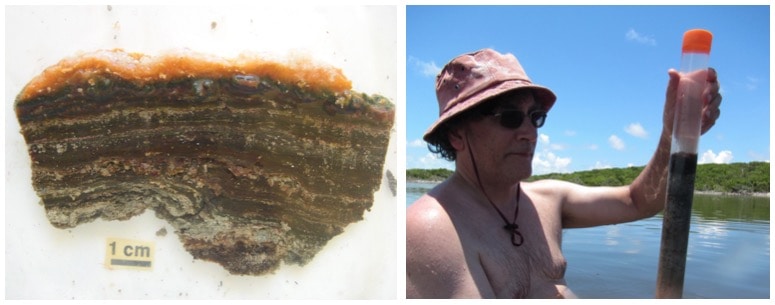Anaconda is the large salt pond on the south end of Little Darby Island. It has organic rich sediments with abundant precipitation of calcium carbonate. The mats are typically very firm, with surface caramel layer of exopolymeric substances (EPS), underlain by green and purple cyanobacterial layers. Salinity of the pond is typically 70-90 ppt, but ranges from 40 (June 2012) to 224 ppt (March 2011).
When John Stolz (Duquesne University) and Pam Reid (University of Miami) visited the pond in June 2105, there was a major change. First, the pond had a strong sulphur odor, apparent from some distance. Second, the firm mats with caramel EPS had all but disappeared and the surface of much of the pond was black to yellow-green. The salinity measured at the time of sampling was ~75ppt. The yellow-green surface slime, often forming distinct strings, turned out to be clusters of a filamentous cyanobacterium that was covered with sulfur globules. This microbe appears to be similar to Oscillatoria limnetica from Solar Lake, Sinai, which has been shown to use hydrogen sulfide (H2S) instead of water (H2O) for photosynthesis.




